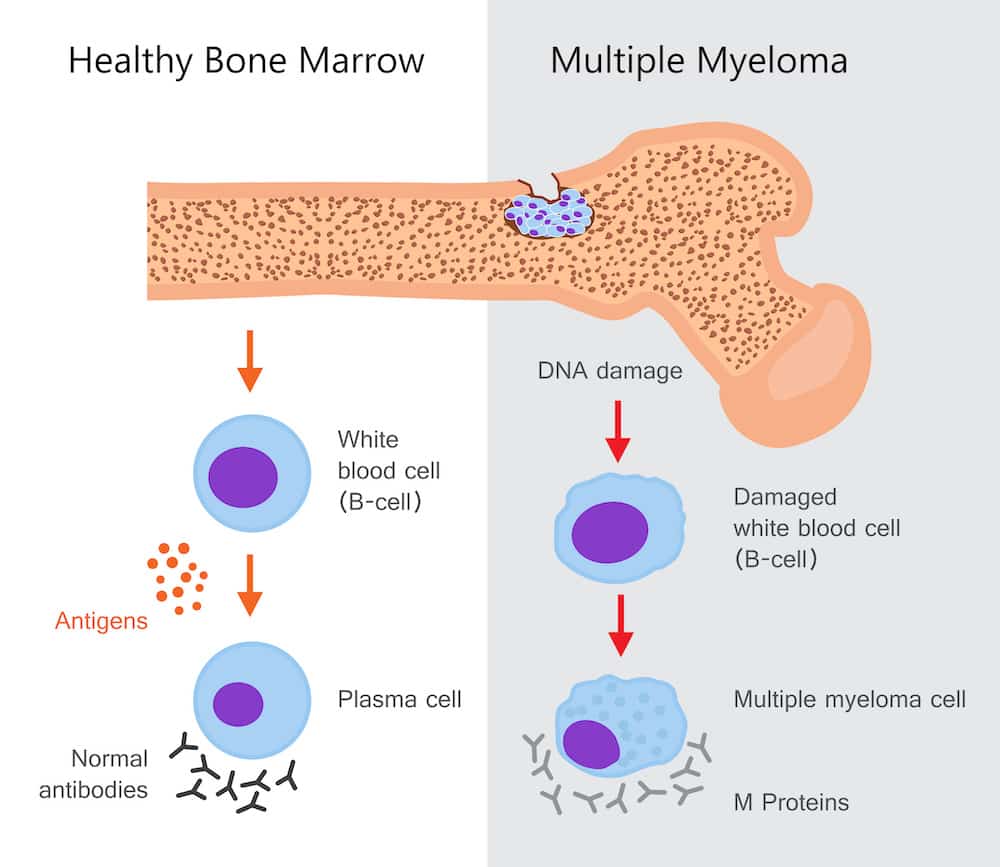We often think about cancer as a solid tumor growing on healthy tissue, usually an organ such as the liver, the prostate, or the mammary glands. But there are also non-solid cancers, and blood cancer is one of them. Multiple myeloma is a type of cancer affecting blood cells. It was initially described back in 1848, and it is actually included in a wide range of blood cell diseases that include plasma cell leukemia.
What is it exactly? Why does it happen? How does it feel? And what treatment options are there available for these patients?
Overview

As noted above, multiple myeloma is a malignancy or cancer that affects a type of blood cell known as a plasma cell. In this disease, there is an over-proliferation of monoclonal plasma cells in the bone marrow, which affects the growth and differentiation of other cell lines.
The disease can be asymptomatic sometimes, but other patients report severe symptoms and sometimes complications that require emergency medical attention. The diagnosis is usually made with a routine blood screening, but some patients have a pathologic fracture as the initial finding to diagnose the disease.
There is currently no cure for multiple myeloma. Still, different therapies can be used to control the severity of the disease and its symptoms, preventing the occurrence of complications in the process.
